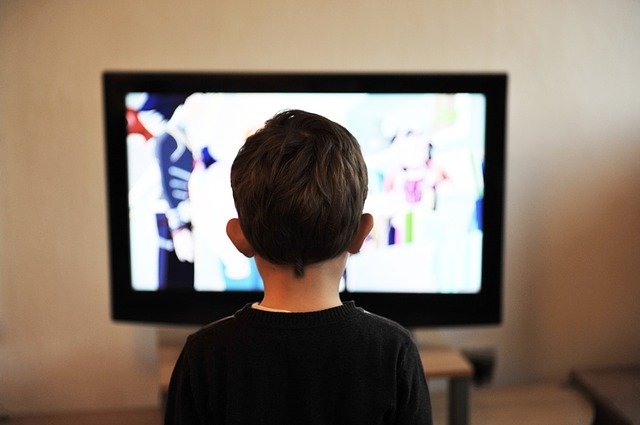In the decades since home television was introduced in 1927, there have been many changes – an evolution of several changes, if you may. At the outset, there wasn’t a way to record a show you missed. You had to be in front of your TV at the exact time the show/episode was being aired. With what technologies we have today, it’s a different story.
Going back to 1927, no one would have assumed that there would be a day when it would be possible to watch a show on the go. There were also very few channels, and TV shows being aired viewers offered relatively little in options. That’s not the same today. There are many shows and programs to choose from today. Thanks to advances in technology and mobile devices’ availability, consumers can now watch their favorite shows anywhere they are.

The demand for programming by consumers is much higher now, and there are many entertainment channels filling those demands. We now have hundreds of channels, several streaming services, many TV shows (counting would be a futile exercise), and multiple recording options.
Any Possibilities TV Will Become A Thing Of The Past Soon?
It is no news that many people have been drawn away from cable TV by streaming services like Netflix, HBO Go, Hulu, AMC, Amazon Prime, TLC, and countless others. Their emergence has been inferring with TV, which has been the dominant force in home entertainment for over seven decades, could soon become obsolete. The convenience of video streaming services is also being compared to TV’s value.
This doesn’t come as a surprise. Although there’s practically nowhere you go that you won’t find TV – bars, restaurants, gyms, pubs, doctor’s offices, etc. – cable TV subscriptions are typically expensive. They also offer very little customization. As a result, about 70% of Americans are greatly dissatisfied with their subscriptions since the money they spend in monthly subscriptions is not commensurate (in any way) with the quality of the product they get in return.
There’s one exception to that, though. You will always get affordable deals and an excellent array of TV channels and programming with the Spectrum channel line up at S9.com. The value you get in return will be well worth your money.
Cable TV Companies Partner With Video-On-Demand Services
In recent times, several well-known cable companies have moved beyond merely offering only cable television. They have begun partnering with different streaming services to enable them to provide their subscribers way more than they currently do. For example, Singtel and Starhub, two of Singapore’s market leaders, now offer their regular cable TV packages with HBO and Netflix bundled.
While there is no denying that regular cable television plans, like Spectrum, Comcast and Mediacom are on the decline, TV isn’t going anywhere yet, nor is it close to being a thing of the past. This may not be obvious to outsiders who think that cable TV is having a very hard time surviving. Yet, insiders have a different view because of what they’re privy to.
The industry still generates over $265 billion yearly. That’s a substantial amount and should dispel any doubts entertained by anyone regarding the strength and survivability of cable TV in our ever-evolving world of technology.
Streaming Services Vs Cable TV
Netflix’s evolutionary path includes going from DVD rentals-only to online-only. It also includes streaming-only old shows to currently having its own productions, many of which have helped establish the company in the production industry. Some of these shows include Stranger Things and Orange Is the New Black.
Also, many producers are now very comfortable with presenting their movies to Netflix. The company has also become the reference point for other streaming services. Per episode, Netflix’s productions are worth about $10 million. This is in contrast to $6 million per episode for traditional television.

Netflix also currently enjoys a level of success similar to Xerox’s, which has gone from a brand name to a verb in the dictionary. Compared to the Cable TV’s extensive, yet inflexible lineup, streaming services are, by far, better suited for workers.
Netflix’s Impact On Television
The impact Netflix has had on TV should, by now, be evident to all. There’s no guessing how the streaming service’s content will be viewed. Moreover, several other companies have started streaming services besides Netflix. These services have filled the market; the average consumer now speculates that the end of traditional television has come.
That’s far from true as already stated! Traditional TV still has a place and is going nowhere. They will undoubtedly phase-out coaxial cables, yet 5G and routers will still need TV to send information. The direction cable TV goes, in the future, may differ from what we’re accustomed to, but it won’t crash, at least not in the foreseeable future.
Why TV Should Completely Switch To The Internet
There are several benefits to switching to the internet. One of them, high up the list, includes the fact that you wouldn’t have to sit through as many annoying adverts trying to ‘force’ you into buying fast food and products you don’t need.
When it comes to marketing and adverts, digital platforms like Google are adaptive. They only display relevant ads because they remember your preferences and the exciting things you search for online.

When marketing is done this way, companies can experience more growth because their ads are displayed to those looking for it. Consumers also benefit because the number of adverts is reduced, and they only see the things they are looking for.
Many believe we’re now in the golden age of content since people can get the programming they want, when they expect it. They switch between apps in seconds to compare, contrast, and select the content they want to watch. The fact that so many people are only looking for content that interests them, and which they will enjoy, is something that the streaming companies should consider when choosing the content to place in the apps.